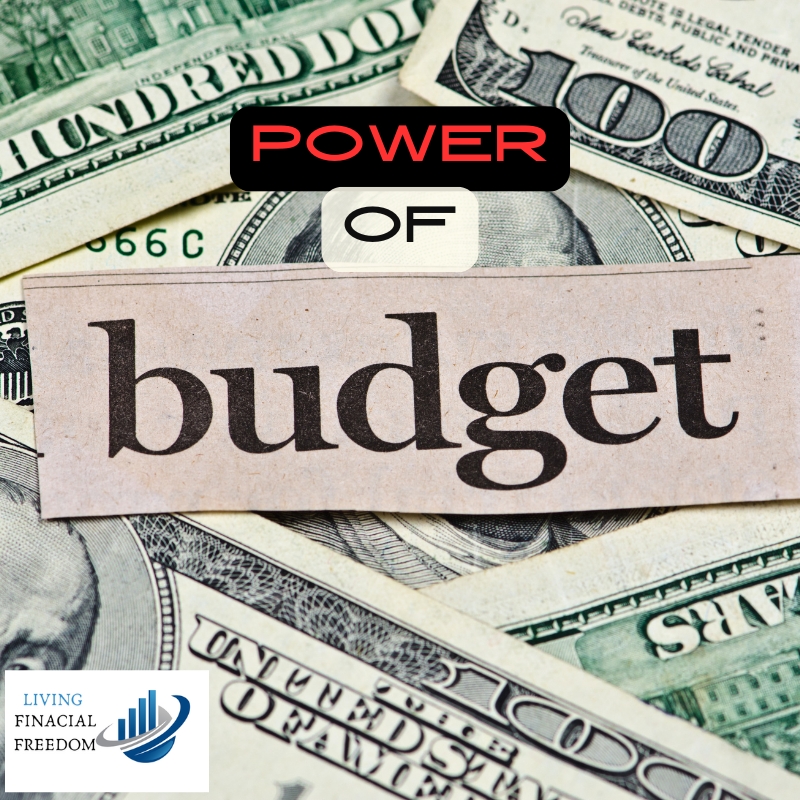
The Power of Budgeting: How to Create and Stick to a Budget for Financial Success
Introduction
Budgeting is one of the most powerful tools in your financial toolkit. Part of the power of budgeting is to gives you control over your money, helps you avoid unnecessary debt, and sets you on the path to financial freedom. Whether you’re just starting your financial journey or looking to improve your financial habits, creating and sticking to a budget is essential. In this post, we’ll explore why budgeting is important, how to create a budget that works for you and strategies for sticking to your budget over the long term.
Understanding the Importance of Budgeting
Budgeting is more than just tracking your expenses; it’s about creating a plan for your money that aligns with your financial goals. A well-structured budget helps you prioritize spending, save for the future, and make informed financial decisions.
Step 1: Assess Your Current Financial Situation
Before you can create an effective budget, you need to understand your current financial situation. This involves knowing how much money you earn, where it goes, and identifying areas where you can cut back.
- Track Your Income and Expenses: Start by listing all sources of income and tracking every expense, no matter how small, for a month. This will give you a clear picture of your spending habits.
- Calculate Your Net Income: Your net income is the amount of money left after all expenses are paid. Understanding this number is crucial for creating a realistic budget.
Step 2: Set Clear Financial Goals
Your budget should be designed to help you achieve your financial goals. Whether your goal is to save for a down payment on a house, pay off debt, or build an emergency fund, setting clear, actionable goals is the key to budgeting success. Setting a financial goals is one of the important part that will let you enjoy the power of budgeting.
- Short-Term Goals: These could include paying off a specific debt, saving for a vacation, or building a small emergency fund.
- Long-Term Goals: Think about your retirement savings, purchasing a home or achieving financial independence. These goals will guide your budgeting decisions.

Step 3: Choose a Budgeting Method
There are several budgeting methods you can use, each with its own advantages. Choose the one that best fits your financial situation and goals.
- Zero-Based Budgeting: Every dollar of income is assigned a job, whether it’s paying bills, saving, or investing. At the end of the month, your income minus your expenses should equal zero.
- 50/30/20 Budget: Allocate 50% of your income to needs, 30% to wants, and 20% to savings and debt repayment.
- Envelope System: This method involves dividing cash into envelopes for different spending categories. When an envelope is empty, you stop spending in that category for the month.
Step 4: Create Your Budget
Now that you’ve chosen a budgeting method, it’s time to create your budget. Start by listing your income and categorizing your expenses.
- Fixed Expenses: These are regular, recurring expenses like rent, utilities, and insurance premiums. They typically don’t change month to month.
- Variable Expenses: These include groceries, entertainment, and dining out. These can fluctuate, so it’s important to track them closely.
- Savings and Debt Repayment: Prioritize setting aside money for savings and paying off debt. Even small amounts can add up over time.
- Step 5: Stick to Your Budget
Creating a budget is only half the battle; sticking to it is where many people struggle. Here are some strategies to help you stay on track and enjoy the power of budgeting.
- Review and Adjust Regularly: Life changes, and so should your budget. Review your budget monthly and adjust as necessary.
- Automate Savings: Set up automatic transfers to your savings account to ensure you’re consistently saving each month.
- Avoid Impulse Purchases: Make a rule to wait 24 hours before making non-essential purchases. This will help you avoid impulse buys that can throw your budget off track.
Conclusion
Budgeting is a powerful tool that can transform your financial life. By understanding your financial situation, setting clear goals, choosing the right budgeting method, and sticking to your plan, you can take control of your finances and work toward financial freedom.


